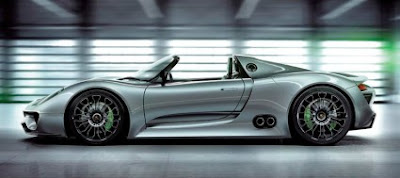Hello memristor!Memristor is a new word creation from memory and resistor because its characteristics are some kind of crossbreed between these two components. "It is a passive electric component in which the resistance is not constant but a function of the history. It is described as the fourth fundamental passive component, besides the resistor, the capacitor and the coil. In contrast to the other three components that came into existence in the early stages of electronic technology, the memristor could not be built before the year 2007."
http://de.wikipedia.org/wiki/Memristor Image source: Wikimedia, J. J. Yang, HP Labs.
Image source: Wikimedia, J. J. Yang, HP Labs.
Leon Chua (University of California, Berkeley) described the memristor already in the year 1971 which at that time did not exist as a passive component. The first physical implementation of a thin-layer composite with such characteristics was reported in 2007.
In April 2008 researchers at the HP labs presented a relatively easy-structured layer composite of titanium dioxide with platinum electrodes as a memristor.
Its decisive advantage: A computer equipped with memristors could boot within fractions of a second because its state remains even when disconnected. "For years, we have made such tests", says HP Labs Senior Fellow Stan Williams. Today's PCs lose the contents of their working memories when switched off - the PC has to retrieve the requested information from the hard disk at each start.
The electronic components can even do a lot more: According to Williams, the memristors can also be linked to logic components to execute calculation operations and - in contrast to today's processors - they can also assume interim values and not only the values "0" and "1". They are possible because memristors do not have a constant but a variable resistor which can be continuously adjusted when the applied voltage is changed. The inventor is convinced that one day the hard disks, RAM and digital flash memories will be ready for the museum. These memory media are much too slow and physics restricts its miniaturisation. In already just a few years the HP developers will oust these memories from computers and mobile phones - and one day they will even make microprocessors redundant.
The idea of a memristor came to Leon Chua, today a professor of electrical engineering at the University of Berkeley who formulated the mathematical bases of electrical components in his doctorate thesis at the end of the 60ies. According to Chua's formulas there would have to be four of them: resistors, capacitances (capacitors), inductances (coils) and a crossbreed of a controllable resistor and memory function.











